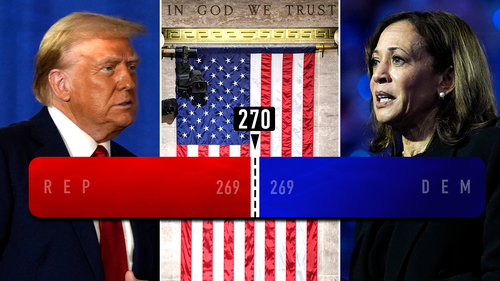If there is a tie in the Electoral College, the vote is turned over to the House of Representatives as per Article II Section 1 Clause 3 of the US Constitution.

House Representatives are required to immediately vote by ballot for the candidate of their choice and whoever wins the majority wins the presidency.
But each state only receives one vote, regardless of population, so states with multiple House Representatives must conduct an internal poll to decide on their vote.
The winner must secure at least 26 of the 50 delegation votes.
According to the Congressional Research Service, this poll would also include newly elected members of Congress who would be sworn in on January 6, 2025.
The House would have to wait until these members are sworn in to cast its vote.
If a president still hadn’t been elected by inauguration day on January 20, the vice president-elect would be required to serve until a candidate has won.
There have only been two presidential election ties in US history.
In 1800, two candidates received exactly 73 electoral votes and the vote was sent to the House of Representatives, which deadlocked 36 times before Thomas Jefferson was chosen.
In 1824, frontrunner Andrew Jackson failed to secure the majority and the presidential vote was passed to the House again and John Quincy Adams was elected instead.
What is the Electoral College?
Whichever candidate won the popular vote in each state receives all of that state’s electoral votes.
The only exceptions are Maine and Nebraska, where two votes go to the winner of the popular vote, and remaining votes are allocated to the candidate that is most popular in each of the states’ congressional districts.








